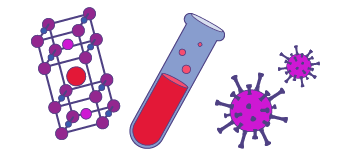Collision Induced Dissociation (CID) or Collisionally Activated Dissociation (CAD) is commonly used to fragment gas-phase ions in mass spectrometry, especially from large, non-volatile molecules such as proteins.
In CID, a strong electric field accelerates ions into a neutral gas (typically He, N2, or A), and each ion collides with gas molecules several times. The high kinetic energy of the fast-moving ion is converted to internal energy, thereby increasing the Boltzmann temperature and eventually breaking the weakest covalent chemical bonds. The resulting fragment ions are extracted from the collision chamber and injected into a mass analyzer.
Based on the masses (and, with high mass resolution, the elemental compositions) of the various fragment ions, it is possible to identify functional groups and linkages (e.g., for peptides and proteins, the amino acid sequence). A fragmentation pattern, like a fingerprint, can sometimes be used to identify the molecule of interest.

Explore our magnet schedule to see what exciting research is happening on our stellar fleet of instruments right now.
For more information please contact Amy McKenna, Manager, ICR User Program.
Last modified on 23 December 2022